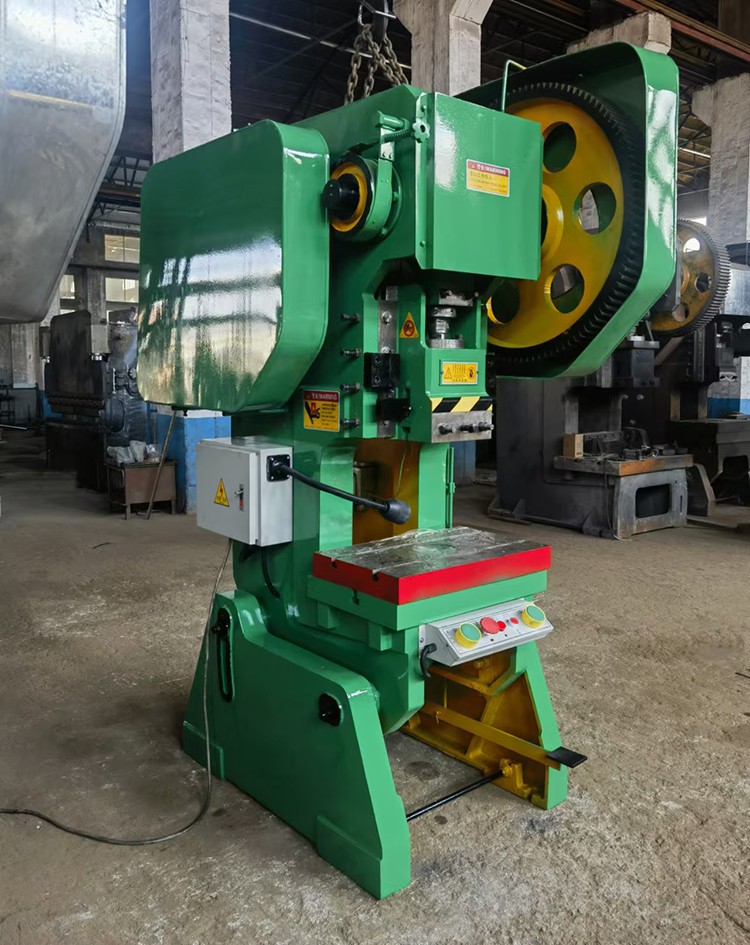

We are a professional punching machines manufacturer with over 10 years of industry experience. Today, we would like to introduce you to the safe operation practices of punch presses:

Punching machine as an important equipment in metal processing, its high efficiency and precision are accompanied by certain operational risks. Standardized operation procedures can not only protect personnel safety, but also extend the service life of the equipment. This article will systematically introduce the safety points in the operation of punching machine, and help operators to establish the correct operating habits.
1, Preparation before operation
(1)Personal protection check
Protective glasses, noise-proof earplugs and non-slip working shoes must be worn before operation. Long hair should be coiled up and placed in the work cap, avoid wearing loose clothing or jewelry. Check whether the gloves meet the standard of anti-mechanical injury, and make sure the protective equipment is intact.
(2)Confirmation of equipment status
Check the oil level of each lubrication point of the punch press before start-up, and observe the guide rail and slider for abnormal wear and tear. Test whether the emergency stop button and photoelectric protection device are sensitive, and confirm that the mold is firmly installed without loosening. Check whether the pressure of the pneumatic system is stable within the range of 0.5-0.7MPa.
(3)Work environment organization
Clean the debris on the working table and within 2 meters around, keep the ground dry and free of grease. Check whether the thickness of the material is in line with the nominal range of the mold, blanks should be neatly yarded in a special material rack.
2, Safety Points in Operation
(1)Standardize the operation process
Special tools must be used for feeding and picking up workpieces, and it is strictly prohibited to enter the die area with bare hands. After the single stamping stroke, wait until the slide stops completely before picking up and placing the workpiece. Maintain a reasonable rhythm of no more than 40 times per minute during continuous operation to avoid overheating of the equipment.
(2)Handling of abnormal conditions
When there is jamming, strange noise or oil leakage, press the emergency stop button immediately. Before troubleshooting, you must cut off the power supply and hang a warning sign, use pry bars and other tools to deal with the jammed material, and prohibit forcibly starting the equipment.
(3)Multi-people collaboration norms
When working together, the main operator must be designated, and the "start" and "stop" commands must be obeyed uniformly. Auxiliary personnel shall not operate the control panel without authorization, and the feeding area and receiving area shall be divided into clear working boundaries.
3, Precautions after shutdown
(1)Standardize the shutdown procedure
Shut down the feeding device first, and stop the slide at the lower dead center position after the last workpiece is processed. Before cutting off the power supply should confirm that the flywheel completely stop rotating, the pneumatic system needs to be emptied of residual pressure.
(2)Daily Maintenance Points
Clean the metal debris in the mold daily and check the tightening status of key bolts. Fill the specified type of grease on the guide rail every week and keep the integrity of the shield. Find the mold edge wear more than 0.1mm should be reported for repair.
(3)Handover record requirements
truthfully fill in the equipment operation records, focusing on abnormal vibration, excessive oil temperature and other conditions. The unfinished processing batch should be clearly marked with mold number and process parameters to avoid misuse by others.
4, The safety management of special processes
(1)Mold replacement specifications
When replacing the mold must use lifting equipment, the weight of more than 25kg molds need two people to cooperate. Adopt manual mode single stroke when debugging, and adjust the closing height gradually. Mass production is allowed only after the first piece passes the inspection.
(2)Thin Plate Processing Requirements
When dealing with materials with thickness less than 1mm, it is necessary to adjust down the stamping speed to 60% of the rated value. Increase the blowing device to prevent the material from sticking, and check the mold clearance once every 200 pieces of processing.
(3)Night shift operation supplement
Lighting brightness is not less than 300lux, and 15-minute equipment inspection must be arranged. Simplify the night process route and prohibit the execution of high-risk debugging operations.
The essence of safe operation is to establish a systematic awareness of risk prevention and control. It is recommended that companies organize quarterly safety drills, and new employees should complete more than 20 hours of on-the-job training. Operators should develop the habit of “three checks”: Checking the status of equipment, checking the matching of workpieces, and checking the protection in place. Only by transforming the norms into a daily code of conduct can the goal of safe production be truly realized.
If you are interested in punching machines, please contact us.
 Address:Room 1202, Detaitang Building, No. 118 Huaguang Road, Zhangdian District, Zibo, Shandong
Address:Room 1202, Detaitang Building, No. 118 Huaguang Road, Zhangdian District, Zibo, Shandong WhatsApp:+8615653328535
WhatsApp:+8615653328535 Wechat: +8615965331535
Wechat: +8615965331535  E-mail:zs@sdsmachinery.com
E-mail:zs@sdsmachinery.com